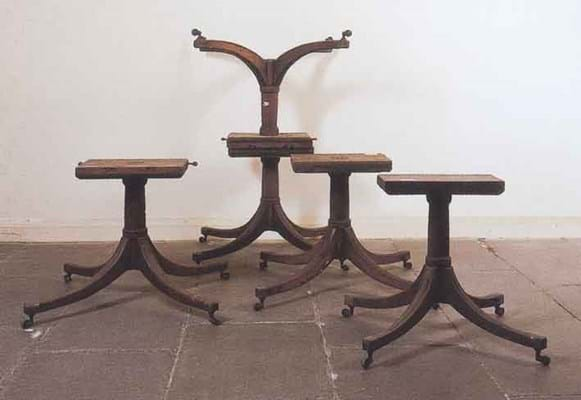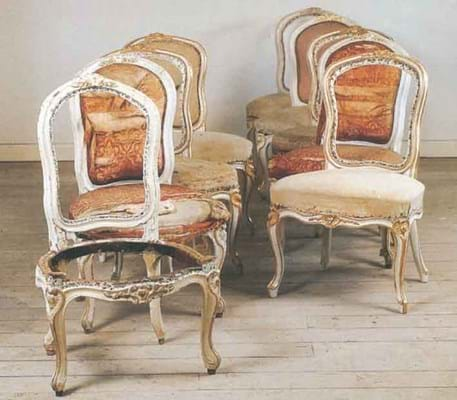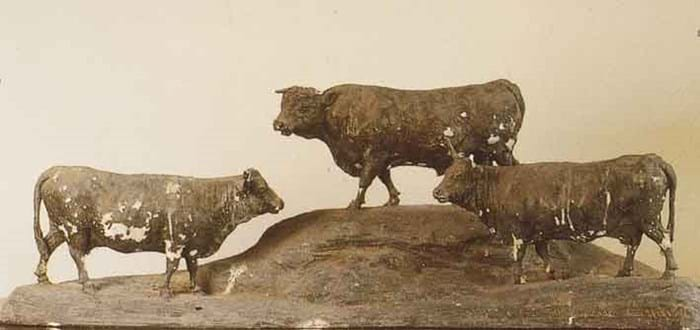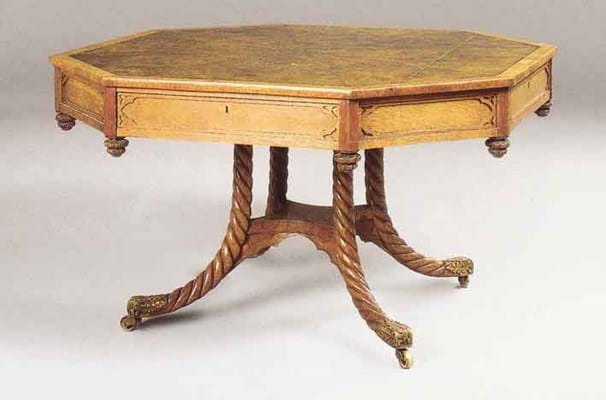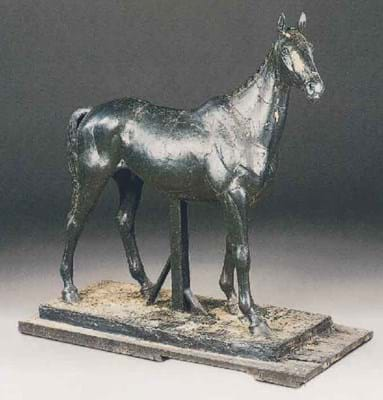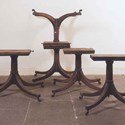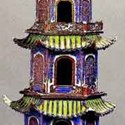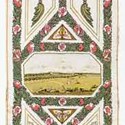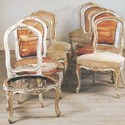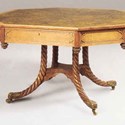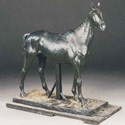This was, plainly, the promotional strategy behind Christie's two-day, 1290-lot Bedfordshire bonanza at Woburn on September 20-21 billed as Property From Two Ducal Collections.
The collections belonged to the Bedfords of Woburn and the Westminsters. The former was a storeroom clearout - pieces of furniture from Woburn which had been in store for decades which the Russell family and the trustees of the Bedford estates wanted to sell to improve the house and core collections.
The latter was rather more of a proper house contents dispersal, brought about by the death last year of Anne Duchess of Westminster, wife of the 2nd Duke, and sold to benefit her charitable causes.
Sandwiched between the two events, was a third related property - the contents of Endsleigh, an 18th century ornamental cottage in Devon. This had been built for Georgiana, Duchess of Bedford, but sold in the 1960s to the Endsleigh Fishing Club. Now the building has been sold to Olga Polizzi with a view to turning it into a hotel and the fishing club and the Endsleigh Charitable trust was selling off the contents.
None of these properties was substantial enough to make an individual 'in situ'sale commercially viable, but the economies of scale gained from a triple combination allowed Christie's to mount an on-the-premises event hoping to reap the benefits of the country house formula.
Results
The final statistics suggest it worked. Christie's total of just under £3m was twice their projection and another characteristic of the country house sale was the near total sell out with just 106 lots failing to find buyers.
Perhaps the one aspect that differed from the usual country house sale was the relatively thin attendance. While these events often draw a large audience, the Woburn sale saw the bigger crowds at the viewing.
Come the sale days, Woburn's Sculpture Gallery, where all three sessions were held, was never full to capacity.
Not that this materially affected the results as the final statistics and highlights discussed here indicate. It was more that most of the trade viewed then bid in absentia via commissions or on one of the banks of telephones manned by Christie's staff.
So much for the benefits of combined promotions, but these were still three distinct properties from different vendors, each with their own distinct characteristics. That much was evident when they were set out on view in the various buildings of Woburn's North Court and those distinctions remained through to the performance of each sale session.
The Woburn material, which made up the first 643 lots, and took up the entire first day, was an eclectic mix of paintings, ceramics, furniture and old toys and games from the nursery. Much of this sale derived from the decorative schemes in the demolished east wing with the rest comprising modest items of furniture from the private rooms.
Most hadn't been in use for 50 years, much was in a poor state of repair: seat-less chairs, dirt splattered sculpture and damaged paintings that would require considerable outlay in restoration. But some of the constituents had real quality underneath the blemishes and, all importantly, they had the cachet of the Woburn provenance. Asked before the sale about the decision to hold the dispersal, the present duke said "Personally I am not sad to see these things go. They are going to be looked after and not left to rot."
Judging by the prices paid for some of the distressed elements, his predictions looked accurate. One of the most dramatic instances came with a set of five c.1790 mahogany dining table pedestals, each with channelled sabre legs and brass castors but lacking a top to turn them into a Georgian dining table.
Christie's had predicted £2500-4000 for these but they ended up selling to the trade for £35,000.
Then there were the two early 19th century cheval mirrors thought to have been commissioned by the 6th Duke of Bedford. One was painted grey with parcel gilt Egyptian mask capitals to the uprights and paw feet but with no plate, the other still had its plate but was of plainer design. These were estimated at £800-1200 apiece but sold at £5500 and £4000.
That said, most of the Woburn best-sellers were, predictably enough, pieces that were rare or unusual or by known cabinetmakers. Heading the list, as expected, was a massive George III six pedestal, mahogany dining table of c.1790-1800 attributed to Gillows and thought to have been supplied c.1815 to the 5th Duke for the State Dining Room. This came in at £130,000, comfortably over its £60,000-100,000 estimate.
Following it in price was a piece which, while far from perfect, was rare enough to attract attention wherever it appeared - a Chinese famille rose and blue and white model of a pagoda. Even with some missing components and finials it still stood 6ft 7in (2m) high and was almost certainly supplied as part of the 6th Duke's decorative scheme for the Chinese rooms at Woburn.
Few such pagoda models of this size have survived so buyers were ready to overlook damage in the knowledge they were not likely to find many better examples.
Before the sale, many of the missing elements were rounded up and offered with the piece so, while it represented a complex restoration job, recreation was at least possible. It ended up eclipsing its £6000-10,000 estimate to take £92,000.
Other Woburn pieces of particular individual merit and interest included a Regency bronze torchère based on a Piranesi design and attributed to Vulliamy and a set of 11, c.1790 dining chairs thought to have been designed by Henry Holland and executed by the Paris-trained, London-based Francois Hervé.
The torchère fetched £16,000. The chairs, which are now leather upholstered but were originally caned with squab cushions making them easily portable for the card playing set of the period, realised £38,000, selling to an "advisor" acting presumably for a private client. The bulk of the Woburn pieces weren't making anything like these kind of sums although prices often exceeded the conservative estimates.
There was plenty of modest seat furniture upholstered armchairs mirrors or white painted wash stands, picture frames and domestic silver guided in the low hundreds and selling for under £2000, examples of which are shown in our saleroom selection. Overall the Woburn clearout netted just over £1.3m for the trustees to use on improving the upkeep and collections of Woburn Abbey.
The buyer's premium was 19.5/12%.

